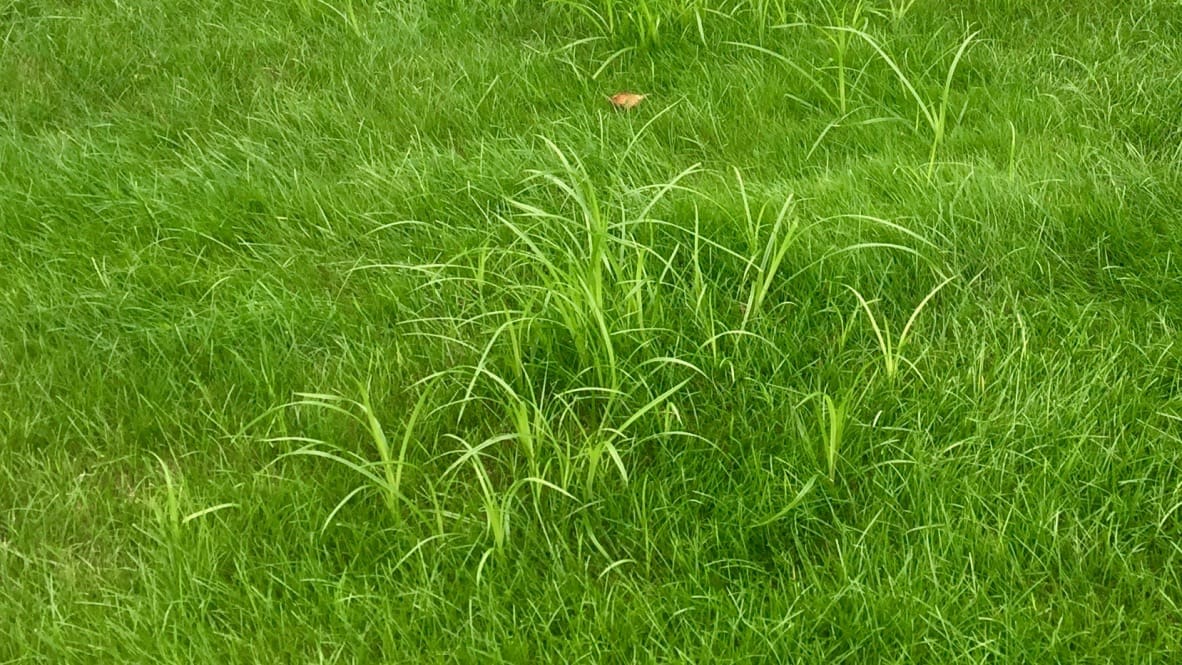
Nutsedges are perennial weeds that are aggressive and difficult to control. While the weed may look grassy, it is not a grass or a broadleaf weed but a sedge.
Sedges have triangular stems and three rows of leaves. They grow at a much faster rate than turfgrasses, making them very noticeable in yards. Sedges require different herbicides and application timing to control them properly. Below is an overview of this type of weed and how they can be controlled.
What Does It Look Like?
There are actually two species of nutsedge, yellow and purple. Purple nutsedge (Cyprus rotundus) and yellow nutsedge (Cyperus esculentus) may look similar at first but their susceptibility to herbicides differ so it is important to identify them correctly.
Purple nutsedge has leaves that taper abruptly to a blunt point and are a darker green than yellow nutsedge. It has a purplish to dark brown seed head. It is usually under six inches when mature.
Yellow nutsedge has light green leaves and long tapered leaf tips. Yellow-brown branched seedheads appear in the summer. It can be 12 to 16 inches tall when mature.
Favorable Conditions and Method of Growth
While nutsedges can thrive in almost any kind of soil, they prefer moist soil that is poorly drained or irrigated too frequently. They can also grow in well-drained areas if the competition from other grasses is limited.
Because nutsedge can spread by small tubers, by seed and by rhizomes, they can quickly become established. The tubers and rhizomes can grow eight to 14 inches below the soil surface.
The tubers can be spread anytime someone moves soil while planting or dividing ornamental plants in the landscape. The tubers can remain dormant in the soil for several years and sprout new plants.
Control Methods
A combination of cultural, mechanical and chemical controls is the best method for managing nutsedge in the lawn. Culturally, it is best to encourage a healthy, thick lawn that can compete with the weeds. Mow high in the early summer and avoid overwatering the turf. If the high soil moisture is not from too much irrigation, work to improve the soil drainage.
Mechanically, if it is a particularly small patch of nutsedge you can dig it up. Make sure to dig at least 10 inches deep and eight to ten inches in diameter to remove the spreading tubers. This is best done only when the plant is young.
Chemically, applying a selective herbicide formulated for nutsedge in the late spring or early fall is the ideal time to control the weed. For serious infestations, treatments over several years will be necessary to reduce viable tubers in the soil.
After applying a herbicide avoid mowing for one to two days to allow for adequate absorption to the tubers.
Find more technical tips in our Technical Resource Library in the NALP Member Center.

